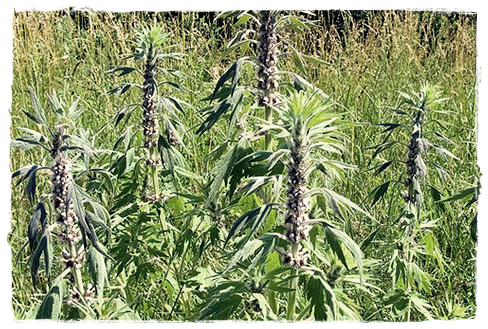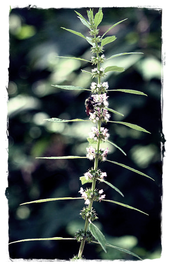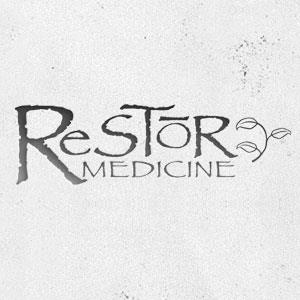
Energy for the day, fatigue for the night |
|
As mentioned before, fatigue and insomnia are very common symptoms of a person who is dealing with chronic Lyme disease and/or coinfections. These symptoms wouldn’t be so much of a problem if they’d just occur at the appropriate times of a person’s day. Motherwort, when taken in the morning, can help give a person who normally suffers with fatigue during the day, energy. This could very well be attributed to motherwort’s ability to mend mitochondrial dysfunction, but this statement is based on deductive reasoning.Usually where there is daytime fatigue, there is nighttime energy, or just an inability to fall asleep and/or stay asleep – insomnia. Motherwort, when taken roughly an hour before bed, will actually help facilitate a person into a more relaxed state of mind and body that a person can actually feel. If you’ve ever taken magnesium in higher dosages, the relaxed physical feeling motherwort can create in the muscles is similar to that. Muscles become very relaxed, the mind doesn’t stay too far, and a state is created in which sleep is more welcome. |
Help out the heart
Heart palpitations, shortness of breath, dizziness, chest pain, and an irregular heartbeat are symptoms a person with chronic Lyme disease can experience when the heart becomes distressed. Lyme itself has an affinity for the heart – it likes to hang around in it – but it isn’t the only infection that can contribute to heart symptoms. Bartonella has been shown to cause havoc on the heart by leaving fat deposits behind which can disrupt the normal beating process of the heart.Motherwort being used as a medicine for an ailing and troubled heart is no new method at it has been employed by the ancient Romans and Greeks as well. Those who have used Hawthorne for heart symptoms, but have found sub-par relief should consider looking into motherwort. By helping to protect the heart with motherwort, symptoms associated and caused by a bothered heart, such as shortness of breath and dizziness, a person may find these symptoms to reduce in their intensities.
mitochondrial dysfunction
Dr. Richard Horowitz, MD lists mitochondrial dysfunction as one of the possible reasons why a person with chronic Lyme may not be getting better [source], and a popular treatment protocol for chronic Lyme disease in Panama by Delta Health Institute known as the “Bx Protocol” works on the basic principle of repairing and supporting the mitochondria for healing [source]. All of this sounds great, but what is mitochondrial dysfunction?Within the cells of the human body, and many other animals and plants we share the planet with, resides a prokaryote (a single-celled organism) known as the mitochondria — and many are found within one cell — roughly 300-400. The primary job of the mitochondria is to convert energy obtained in the food we eat, coupled with the oxygen we breathe, to eventually form a molecule known as Adenosine triphosphate (ATP) in what is known as the Kreb’s cycle. ATP is the ubiquitous energy molecule used by the cells within the body to carry out their specific functions (i.e., animate the human body). This is why mitochondria are known as the “powerhouses of the cell”.
Mitochondrial dysfunction is simply when the mitochondria don’t produce enough ATP. This results in cells lacking energy and a person feeling tired or fatigued which is an all too common symptom experienced by those with chronic Lyme disease. The mitochondria’s ability to produce ATP efficiently and in adequate levels can become compromised when the structural integrity of the mitochondria become damaged in excess. The damage occurs naturally during ATP production, but the dosage of external factors such as chemicals, toxins, and even certain medications will determine how inefficient the mitochondria become at producing ATP.
In people with chronic Lyme disease, there is a greater chance of experiencing mitochondrial dysfunction because of the endotoxins and toxins that are released and created from Borrelia burgdorferi and other coinfections by being present within the body, and when they are killed by antibiotics, the immune system, herbs, etc in what is known as the herxheimer reaction. Combine the toxins generated from a herxheimer reaction with possible heavy metal toxicity, poor diet, biotoxins from mold, and the mitochondria of the cell are put in a greater position of experiencing a compromise or dysfunction of their ability to produce energy for the human body to metabolize and ultimately fight off the infections.
|
Motherwort has the incredible ability to help protect the structural integrity of the mitochondria, especially the mitochondria of the brain. Mycoplasma, specifically, invades cells in search of nutrients for their own agenda, as they are a very nutrient hungry bacterial species, and as they do, the mitochondria swell and energy production becomes compromised. Motherwort has the ability to reduce the swelling of the mitochondria and reinforce structural integrity. During cell death, apoptosis, which has been shown to be induced by mitochondrial dysfunction, the mitochondrial membrane potential decreases but motherwort actually helps to restore it.In short, when the mitochondria are producing energy for the cells of the body in an efficient manner, the body will then have the energy it needs to combat infection(s). |
other symptoms motherwort can help out with
Motherwort isn’t finished yet. It’s almost like the perfect herb for a few of the very troublesome symptoms a person with chronic Lyme disease can experience at one point or another throughout their fight. Anxiety is a symptom some with chronic Lyme disease and/or coinfections may experience. It’s one of those symptoms that either you get or you don’t, and motherwort may be able to provide strong relief for it.According to Stephen Buhner, light sensitivity is a symptom that “often occurs during Lyme, bartonella, and mycoplasma infection”. Motherwort has been found to greatly decrease a person’s sensitivity to light. [source]
contraindications
resources
- “BX Protocol: Lyme Disease Medical Breakthrough.” YouTube. YouTube, 18 Dec. 2014. Web. 08 Aug. 2015.
- “Mitochondria – Chalk Talk.” YouTube. YouTube, 8 Dec. 2011. Web. 08 Aug. 2015.
- “Cellular Processes: Electron Transport Chain: The Movie.” Cellular Processes: Electron Transport Chain: The Movie. Virtual Cell Animation Collection, n.d. Web. 08 Aug. 2015.
- Ross, Dr. Marty, MD. “Herxheimer Die-Off Reaction: Inflammation Run Amok.” RSS. Treatlyme.net, 7 Nov. 2014. Web. 08 Aug. 2015.
- Gottlieb, E., S.M. Armour, M.H. Harris, and C.B. Thompson. “Mitochondrial Membrane Potential Regulates Matrix Configuration and Cytochrome C Release during Apoptosis.” Nature.com. Nature Publishing Group, 31 Jan. 2003. Web. 08 Aug. 2015.
- Ly., Jennifer D., David R. Grubb, and Alfons Lawen. “The Mitochondrial Membrane Potential (DYm) in Apoptosis; an Update.” Research Gate. Kluwer Academic Publishers, 2003. Web. 8 Aug. 2015.
- Schaller, Dr. David, MD. “Ignore Bartonella and Die: Trivializing Bartonella Is Like Ignoring TNT.” Public Health Alert. Publichealthalert.org, 1 Aug. 2007. Web. 08 Aug. 2015.
- “Motherwort Leonurus Caridica L.” Motherwort Extract Heart Benefits Benefits. Annies Remedy, n.d. Web. 08 Aug. 2015.
- Bergman, Dr. Jerry, Ph.D. “ATP: The Perfect Energy Currency for the Cell.”ATP: The Perfect Energy Currency for the Cell. Trueorigin.org, 1999. Web. 08 Aug. 2015.
- Buhner, Stephen Harrod. “Motherwort.” Healing Lyme Disease Coinfections: Complementary and Holistic Treatments for Bartonella and Mycoplasma. N.p.: n.p., n.d. 230-31. Print.
- Horowitz, Dr. Richard I., MD. “Lyme and Mitochondrial Dysfunction.” Why Can’t I Get Better? Solving the Mystery of Lyme and Chronic Illness. N.p.: n.p., n.d. 263-64. Print.



